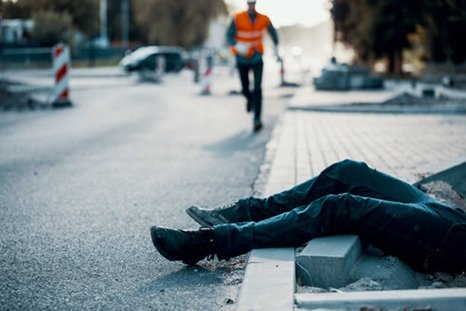
We walk on sidewalks every day. Whether you’re heading to work, running errands, or walking your dog, sidewalks are a part of daily life. Most of us don’t think twice about them — until something goes wrong. A sudden fall can happen in an instant, and the injuries can be serious. Slip and fall accidents on sidewalks are more common than people realize and can lead to long-term pain, medical bills, and even time away from work.
After a slip and fall accident on sidewalks, many people are left confused about what to do next or who might be responsible. It’s not just about the fall itself, but the conditions that caused it and how to protect yourself legally and physically after it happens. This blog is here to shed light on why these accidents happen and what steps you can take to avoid them or deal with them properly.
Common Causes of Sidewalk Slip and Fall Accidents
Several things can turn a simple sidewalk into a hazard. Cracks, uneven surfaces, and poor lighting are some of the most common causes.
Here’s a breakdown of what often leads to these accidents:
- Uneven Pavement
Sidewalks crack, sink, and shift over time. Tree roots can lift sections of the pavement, creating dangerous bumps or dips. These changes are often hard to see, especially if you’re walking quickly or distracted.
- Weather Conditions
Rain, ice, or snow can make sidewalks very slippery. In colder areas, unshoveled sidewalks or untreated ice patches can become serious safety hazards. Even a thin layer of moisture can increase the risk of slipping.
- Poor Maintenance
Sidewalks that aren’t regularly checked or maintained can easily fall into disrepair. Loose bricks, holes, or broken concrete should be fixed promptly. Unfortunately, this doesn’t always happen.
- Low Visibility
If sidewalks aren’t well-lit at night, it’s easy to miss a crack or a change in height. Dim lighting can hide hazards that would otherwise be avoidable during daylight.
What You Can Do to Avoid a Fall
Now that we’ve talked about why falls happen, let’s talk about prevention. While you can’t control how sidewalks are maintained, there are ways to stay alert and reduce your risk.
- Pay Attention While Walking
It sounds obvious, but many falls happen when people are looking at their phones or are distracted. Keep your eyes on the ground ahead of you, especially when walking in unfamiliar areas.
- Wear Proper Footwear
Shoes with good grip and support can help you stay steady on uneven or slippery surfaces. Avoid flip-flops or high heels if you’re walking long distances or in questionable conditions.
- Avoid Walking in Poor Weather if Possible
If the weather is bad and sidewalks are icy or wet, it’s safer to stay indoors or take extra caution. Walk slowly and try to avoid areas where water or ice tends to collect.
What to Do If You Slip and Fall
Even with the best precautions, accidents can still happen. If you do fall on a sidewalk, here are a few important steps to take:
- Get medical attention, even if the injury seems small. Some symptoms show up later.
- Take photos of the sidewalk condition where you fell.
- Collect contact information from any witnesses nearby.
- Report the incident to the property owner or city, depending on where it happened.
Documenting the situation right away will help if you decide to file a claim later.
Final Thoughts
Slip and fall accidents on sidewalks can be painful and stressful, but understanding the causes and knowing what to do makes a big difference. Whether it’s watching your step, choosing the right shoes, or knowing your rights, a little preparation can go a long way.
Stay alert, take your time, and don’t ignore the small things that could lead to big problems. And if you do find yourself injured, make sure to protect your health and explore your legal options.



